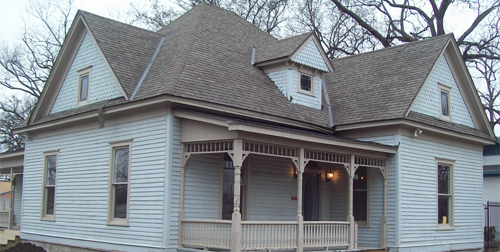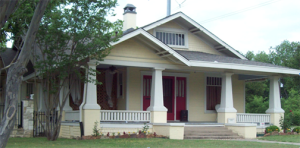 The Texas Historical Commission has advised Garland’s 102-year-old Travis College Hill Addition that it was selected to receive a Texas Historical Marker.
The Texas Historical Commission has advised Garland’s 102-year-old Travis College Hill Addition that it was selected to receive a Texas Historical Marker.
This was decided at the commission’s January meeting in Austin. The marker for Travis College Hill is the only state marker approved for Garland in 2015 and one of only six approved this year for all of Dallas County.
This selection recognizes the Interurban Land Company’s Travis College Hill Addition because of its unique history and significance to Garland and the State of Texas.
The Texas Historical Commission plans for the marker—which is 27 inches tall by 42 inches wide and will be installed on a metal pole about 4 feet above the ground—to be ready for unveiling at the 3 p.m. ceremony April 11 during the historic home tour of Travis College Hill.
The new marker will be located on the boundary line between 313 South 11th Street and Garland’s Historic Pace House at 317 South 11th. This distinguished honor for the neighborhood was sponsored by the Dallas County Historical Commission and its chair, Don Baynham.
The free,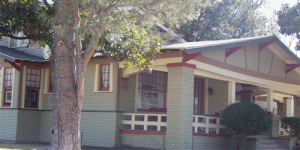 public tour of homes April 11 will be held from 12 p.m. to 5 p.m. and will be part of the city’s 2015 Heritage Day celebration. Besides Garland’s turn-of-the-century Pace House at 317 South 11th, other homes on tour will be 313 South 11th Street (Louis and Kay Moore); 411 South 11th (Jim and Cindy Bird), 301 South 11th (Dale and Hillary Adams); and 400 South 11th (Greg and Becky Baxter). The latter four homes date to the 1915-1918 era.
public tour of homes April 11 will be held from 12 p.m. to 5 p.m. and will be part of the city’s 2015 Heritage Day celebration. Besides Garland’s turn-of-the-century Pace House at 317 South 11th, other homes on tour will be 313 South 11th Street (Louis and Kay Moore); 411 South 11th (Jim and Cindy Bird), 301 South 11th (Dale and Hillary Adams); and 400 South 11th (Greg and Becky Baxter). The latter four homes date to the 1915-1918 era.
The 3 p.m. ceremony will feature the marker unveiling, the re-dedication of the Pace House and other presentations by dignitaries.
The Travis College Hill Addition was platted in January 1913. The city of Garland has desig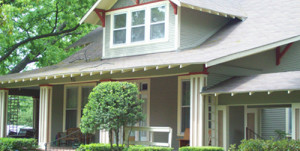 nated the remaining remnant of Travis College Hill (South 11th Street between Avenues B and D) as its first Historic District. South 11th Street, the major artery for Travis College Hill, was the city’s first Garland Avenue. (The current Garland Avenue did not exist and was part of a cotton field.) Dwellings contained on this two-block stretch of road represented some of the finest examples of that day’s architecture; its residences housed some of Garland’s most prominent citizens, including three Garland mayors, a GISD school-board president, and five city councilmen (or aldermen, as they were called until 1956), as well as some of the city’s best-known civic, political and religious leaders.
nated the remaining remnant of Travis College Hill (South 11th Street between Avenues B and D) as its first Historic District. South 11th Street, the major artery for Travis College Hill, was the city’s first Garland Avenue. (The current Garland Avenue did not exist and was part of a cotton field.) Dwellings contained on this two-block stretch of road represented some of the finest examples of that day’s architecture; its residences housed some of Garland’s most prominent citizens, including three Garland mayors, a GISD school-board president, and five city councilmen (or aldermen, as they were called until 1956), as well as some of the city’s best-known civic, political and religious leaders.
Travis College Hill Addition was carved out of a 73 1/3-acre tract owned at the time by early Garland pioneers Richard C. and Sallie F. Walker Wyatt.
Developer R.O. Travis joined with Garland landowner and community leader Wyatt to inaugurate the Travis College Hill Addition on Wyatt’s property on the western edge of town that abutted the planned route of the new Interurban electric car line once envisioned to connect Greenville to Dallas and was slated to run down Avenue D (then known as Mewshaw). The electric car line never materialized, but the residential addition that sprang up adjacent to its planned operation continu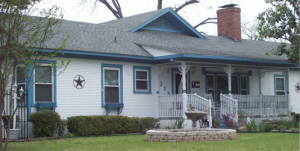 es to this day.
es to this day.
The addition derived its name from developer Travis as well as most probably from the fact that Garland College (a subscription school that included primary, high school and college levels) was situated nearby. The “hill” is believed to have referred to the fact that the area on which Garland College (now the site of a GISD alternative school) sat was one of the highest elevations in Garland topographically; the present Avenue A (which ran to the north of the college) was then known as Hill Street.
Last year on Oct. 15, Garland’s historic Pace House was moved to 317 South 11th Street and into the private sector from downtown Garland, where it had been used as a special events center for the city. It now will be used for residential purposes.


